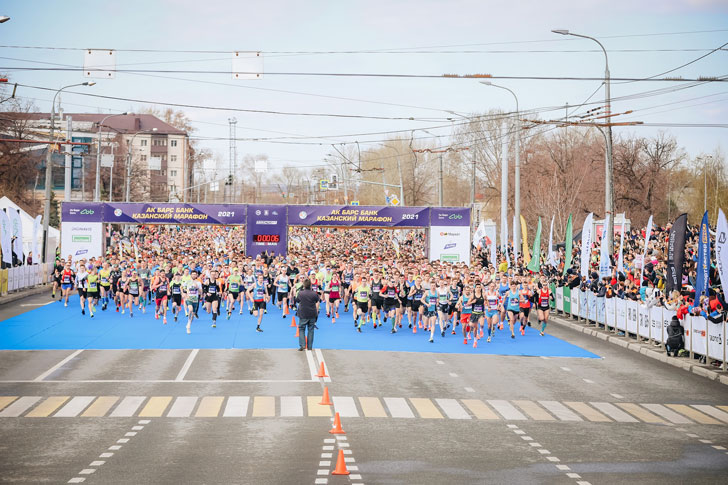The history of long-distance foot races in the Russian city of Kazan dates back to 1974, when local runners decided to celebrate the 50th birthday of Izmail Kulakhmetov, the first chairman of the Argamak running club, with a 50 km race.
The race became an annual tradition; it was usually held on the first Sunday of October. Participants could choose any distance between 1 km and 50 km, depending on their physical shape, health and personal preferences. In 1981, the Kazan Marathon was held on October 7 to celebrate the USSR Constitution Day. It was the first marathon in Kazan with the standard distance of 42 km 195 m.
Over the following years, the Kazan Marathon became one of the biggest sports events in the Soviet Union. It ceased to be held shortly after the collapse of the Soviet Union but was revived almost two and a half decades later. The 2015 Kazan Marathon was held to commemorate the 70th anniversary of the victory in World War II. Athletes could choose one of the three races: a marathon, a half marathon, or a 5K run.
Since 2015, the Kazan Marathon has been held every May as part of the TIMERMAN series of sports events (the only exception was 2020, when the marathon was postponed to October due to the COVID-19 pandemic). The event is organized by the Center for the Implementation of Sports Projects, the Tatarstan Athletics Federation, the government of Tatarstan and the Kazan city administration.
Today, the program of the Kazan Marathon comprises four races: a marathon (42.2 km), a half marathon (21.1 km), a 10K race, and a 3K race. In addition, it includes a series of competitions for children of different ages, from infants to teenagers, named TIMERKIDS. There’s even a crawling race for babies aged 4 months or older! The route of the Kazan Marathon is regarded as one of the most beautiful marathon routes in Europe because it passes through all the main sights of Kazan.
The participants of the Kazan Marathon include both professional athletes and amateurs. The vast majority of competitors are recreational athletes who aren’t looking to win. Participating in the race, and, ideally, finishing it is enough of an experience for them. To participate in the Kazan Marathon, one should register in advance and pay a participation fee.
Charity plays an important role in the Kazan Marathon. Part of the proceeds is always donated to one or several charitable organizations. For example, the 2015 marathon raised awareness of Rett syndrome (a genetic disorder that typically affects girls and becomes apparent after 6–18 months of age), the 2016 event focused on supporting people living with HIV/AIDS and combating stigma they have to face, and the 2017 marathon was dedicated to raising awareness of the vulnerable status of the snow leopard.

Photo: kazanmarathon.org




